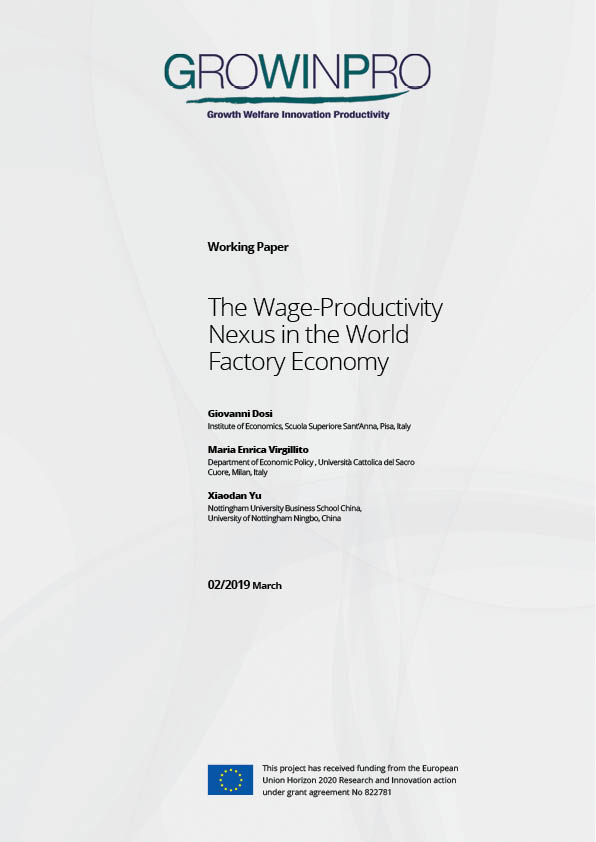This paper highlights new findings on the wage-productivity nexus in theWorld Factory Economy. After presenting the long-run macro-elasticity characterizing the phase of Chinese economic development since the eighties, we look at the wage-productivity nexus from a micro level perspective using a detailed firm-level dataset covering the period of ownership restructuring (1998-2007). A few results are quite robust under different estimation strategies. First, throughout the impressive Chinese economic miracle, elasticities of real wages to productivities – that is the ratios of rates of variations of the former to the latter – are always positive both under pooled and longitudinal estimates, both at firm- and sectoral-levels. Second, such elasticities are dramatically low, and falling in many distinct phases since the late seventies. That is, even in the manufacturing sector, the distribution of gains from the impressive labour productivity growth appears to be markedly uneven. Finally, third, governance institutions seem to matter a lot, with the majority of ownership types exhibiting firm-specific wage determination processes. The low elasticities of wages to productivity are plausibly the consequence of the massive flow of migrant workers from the rural areas to the coasts, somewhat resembling the early phase of the English Industrial Revolution with the pattern of enclosure in the country-side and massive migrations to the industrial towns.

